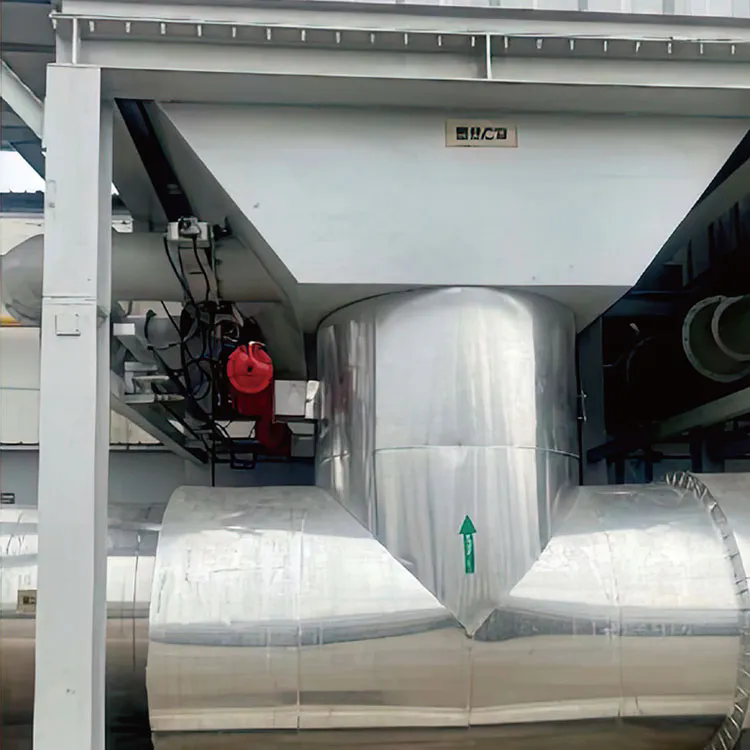The Eccentric Butterfly Valve: A Key Component in Modern Fluid Control
2024-09-13
In the world of fluid control and management, valves play a crucial role in regulating the flow and pressure of various liquids and gases. Among the different types of valves, the eccentric butterfly valve stands out for its unique design and operational advantages. In this blog, we’ll delve into the features, benefits, and applications of the eccentric butterfly valve and explore why it is a preferred choice in many industrial settings.
What Is an Eccentric Butterfly Valve?
An eccentric butterfly valve is a type of quarter-turn valve used to control the flow of fluids through a pipe. Its name derives from its design, where the disc (or "butterfly") is mounted off-center, or "eccentric," relative to the valve’s stem. This design allows for more efficient and reliable performance compared to traditional concentric butterfly valves.
The main components of an eccentric butterfly valve include:
- Valve Body: The main housing that contains the internal components and provides the structural integrity of the valve.
- Disc: The flat, circular plate that rotates to open or close the flow path.
- Stem: The shaft that connects the disc to the actuator, allowing it to rotate.
- Actuator: The mechanism used to turn the disc, which can be manual, electric, or pneumatic.
- Sealing Mechanism: The material that creates a seal between the disc and the valve body to prevent leaks.
Key Features of Eccentric Butterfly Valves
1. Eccentric Design: The off-center positioning of the disc reduces friction between the disc and the seat during operation. This design minimizes wear and tear, leading to a longer lifespan and improved performance.
2. Quarter-Turn Operation: Eccentric butterfly valves operate with a simple quarter-turn motion, making them easy to use and control. This feature allows for quick and precise adjustments to the flow rate.
3. Bubble-Tight Seal: The eccentric design allows for a more effective seal when the valve is closed, minimizing leakage and ensuring a tight shut-off.
4. Flow Control: The shape and movement of the disc provide excellent control over the flow of fluids, making the valve suitable for both on/off and throttling applications.
5. Low Torque Requirements: Due to the eccentric design, the valve requires less torque to operate compared to concentric butterfly valves. This results in lower energy consumption and reduced strain on the actuator.
6. Corrosion and Abrasion Resistance: Many eccentric butterfly valves are constructed from materials resistant to corrosion and abrasion, enhancing their durability in harsh environments.
Benefits of Eccentric Butterfly Valves
1. Enhanced Performance: The eccentric design reduces friction and wear, leading to smoother operation and increased reliability. This results in better overall performance and efficiency in fluid control.
2. Durability: The design improvements in eccentric butterfly valves contribute to their longevity. The reduced wear and tear extend the service life of the valve, reducing the need for frequent replacements.
3. Efficient Flow Control: Eccentric butterfly valves offer precise control over fluid flow, making them suitable for applications that require accurate flow regulation.
4. Compact and Lightweight: Compared to other valve types, eccentric butterfly valves are often more compact and lighter, making them easier to install and handle in confined spaces.
5. Versatility: These valves can handle a wide range of fluids, including gases, water, and corrosive substances, making them versatile for various industrial applications.
6. Cost-Effectiveness: The long lifespan and low maintenance requirements of eccentric butterfly valves contribute to cost savings over time. Their efficiency also reduces operational costs.
Applications of Eccentric Butterfly Valves
1. Water Treatment: Eccentric butterfly valves are commonly used in water treatment plants to control the flow of water and ensure proper distribution throughout the system.
2. Chemical Processing: In the chemical industry, these valves handle corrosive and abrasive fluids, providing reliable flow control and preventing leaks.
3. HVAC Systems: Eccentric butterfly valves are used in heating, ventilation, and air conditioning (HVAC) systems to regulate airflow and maintain temperature control.
4. Oil and Gas: In the oil and gas industry, these valves manage the flow of hydrocarbons and other fluids, ensuring safe and efficient operation of pipelines and processing facilities.
5. Power Generation: Power plants use eccentric butterfly valves to control steam and cooling water flow, contributing to the efficient operation of turbines and other equipment.
6. Mining: The mining industry relies on these valves for controlling slurry and other abrasive materials in processing and transport systems.
Considerations When Choosing an Eccentric Butterfly Valve
1. Material Compatibility: Ensure that the valve material is compatible with the fluids being handled to prevent corrosion and damage.
2. Pressure and Temperature Ratings: Verify that the valve’s pressure and temperature ratings meet the requirements of your application to ensure reliable performance.
3. Size and Configuration: Select a valve size and configuration that fits your piping system and provides the necessary flow control.
4. Actuation Type: Choose an actuator type (manual, electric, or pneumatic) that aligns with your operational needs and control preferences.
5. Maintenance Requirements: Consider the valve’s maintenance needs and ensure that it can be easily serviced and repaired if necessary.
Conclusion
The eccentric butterfly valve is a sophisticated and efficient solution for managing fluid flow in various industrial applications. Its unique design offers numerous advantages, including enhanced performance, durability, and precise flow control. Whether you’re working in water treatment, chemical processing, or power generation, the eccentric butterfly valve provides reliable and cost-effective performance. By understanding its features and benefits, you can make informed decisions to optimize your fluid control systems and ensure smooth, efficient operations.



